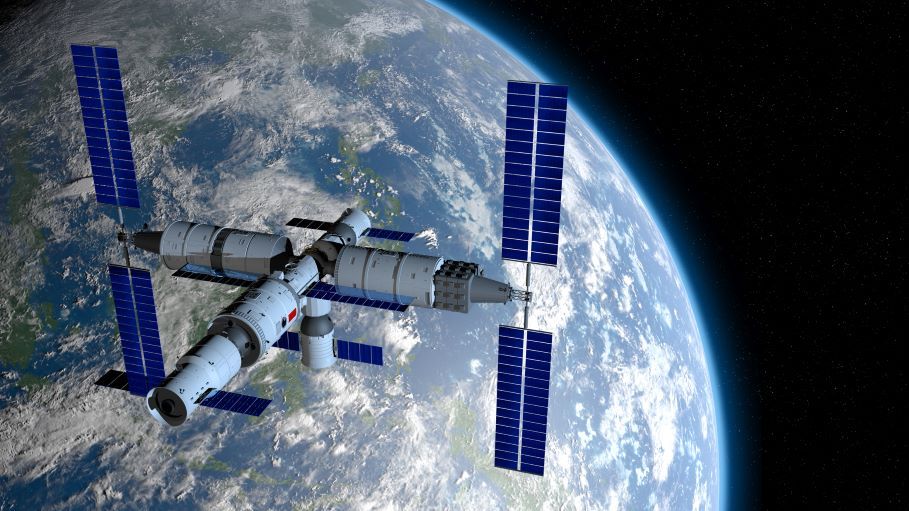New module of Chinese space station is powered by ion thrusters
China's first manned module of its new Tiangong space station, which was launched in late April, is powered by four ion thrusters, an electric spacecraft propulsion technology that could greatly reduce the time necessary to travel to Mars or other planets in the Solar System.
More to read:
[video] How rockets can be launched into space without fuel
According to the South China Morning Post, the fuel-saving technology based on ion drives aboard the module Tianhe is much more efficient compared to chemical propulsion.
For example, the International Space Station needs four tons of rocket fuel in order to stay in orbit for a year. With ion thrusters, it would need only 400 kilograms, the Chinese Academy of Sciences estimates.
Respectively, a trip to Mars could be slashed from eight month to 39 days only. Ion thrusters could be also used by nuclear-powered spacecraft that the country has been building for a while.

Ion thrusters exist since the 1970s but their mainstream adoption has been slow due to weak propulsion and dangers for astronauts – two factors that Chinese scientists may have solved by now. The report says one of the ion drives currently in development has been burning for more than 11 months in a row.

The Chinese space station Tiangong. Credit: Space.com
First, a magnetic field prevent the particles from damaging or eroding the engine and, secondly, a special ceramic material reduces the damage from radiation.
While China’s space agency never advertised its plans for human travel to Mars, the new technology seems to make this possible in the foreseeable future.
***
NewsCafe is an independent outlet that cares about big issues. Our sources of income amount to ads and donations from readers. You can support us via PayPal: office[at]rudeana.com or paypal.me/newscafeeu. We promise to reward this gesture with more captivating and important topics.




![[video] Guess who’s hiding more than 8 kilometers below the ocean’s surface?](/news_img/2025/11/13/news0_mediu.jpg)
![[video] Putin rules from shadows: Investigation finds Russian leader rarely works in Moscow](/news_img/2025/11/11/news1_mediu.jpg)

